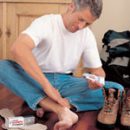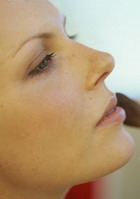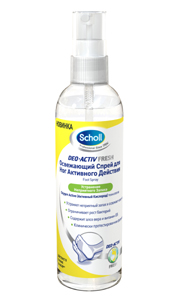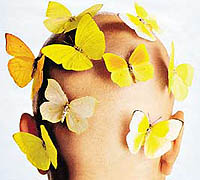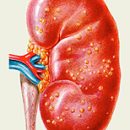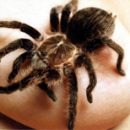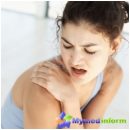Easy and practically not requiring special methods of therapy, deprive of a fuel or pink deprived, pithyriasis. Find out closer about his current, major symptoms, and effective methods of treatment
Content
- For what signs you can find out the pink deprive of Zibra
- The proposed methods of treatment of pink depriving people
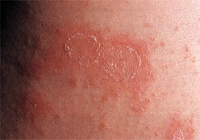 Pink deprived, Pitiriasis, or deprive of Zibra, refers to skin pathologies, causing inflammation of the skin. Manifests in the form of pink spots followed by peeling. Not all deprived can boast exactly the identified pathogen and pink deprive among them. Doctors, exploring him for many years, suggest that the development of the disease causes a virus. Despite difficulties with the definition of the causative agent of the disease, it is one of the easiest types of deprivation, which passes relatively quickly, if you choose the right treatment, although it demonstrates the acute course and dangerous consequences.
Pink deprived, Pitiriasis, or deprive of Zibra, refers to skin pathologies, causing inflammation of the skin. Manifests in the form of pink spots followed by peeling. Not all deprived can boast exactly the identified pathogen and pink deprive among them. Doctors, exploring him for many years, suggest that the development of the disease causes a virus. Despite difficulties with the definition of the causative agent of the disease, it is one of the easiest types of deprivation, which passes relatively quickly, if you choose the right treatment, although it demonstrates the acute course and dangerous consequences.
As a rule, illness «Atakuet» Young women in the spring-autumn period, when avitaminosis and supercooling are possible.
It is assumed that the disease is pink deprived of two factors:
- allergy;
- infection.
The disease is contagious and transmitted by household through things and personal hygiene items.
For what signs you can find out the pink deprive of Zibra
The typical form of the disease is manifested by quite clear symptoms that do not confuse with other species. Favorite place of the appearance of pink linga — this chest: everything starts with it. Then the spots slowly descend to the stomach and inguinal folds, moving to the hips, then rise to the shoulders and neck. It happens, appear on the side surface of the body and back, less often observe pink deprived on the face.
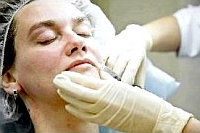 In half patients, the disease begins with the appearance on the skin of a characteristic pink spot having rounded or oval outlines and pink-red rim around the perimeter. It is called the maternal stain of pink delay, sizes can reach several centimeters. After 2-3 days, the center of the spot turns yellow, shrinks, remains dry raised skin, which begins to peel off with seven-haired flakes from the middle, it resembles crumpled cigarette paper and can cause a weak itch. Sometimes the color of the spots can be a light brown shade. Over time, the parent stain becomes more. 3-7 days after its growth stops, nearby or vice versa far from the stains are formed pinkish specks of much smaller sizes. They are symmetric — Lines of high length (Langer Line) and rise above the surface of the skin for 2-3 mm, as a rule, they do not merge and accompanied by itching.
In half patients, the disease begins with the appearance on the skin of a characteristic pink spot having rounded or oval outlines and pink-red rim around the perimeter. It is called the maternal stain of pink delay, sizes can reach several centimeters. After 2-3 days, the center of the spot turns yellow, shrinks, remains dry raised skin, which begins to peel off with seven-haired flakes from the middle, it resembles crumpled cigarette paper and can cause a weak itch. Sometimes the color of the spots can be a light brown shade. Over time, the parent stain becomes more. 3-7 days after its growth stops, nearby or vice versa far from the stains are formed pinkish specks of much smaller sizes. They are symmetric — Lines of high length (Langer Line) and rise above the surface of the skin for 2-3 mm, as a rule, they do not merge and accompanied by itching.
With the further development of pink depriving patients, general weakness, fatigue, lymph nodes increase, fever appears.
After two or three weeks, the rash begins to pass, leaving white or pink footprints on the spot, which after time disappear at all.
There are cases of atypical forms losing:
- bubble, point or drain character of rash;
- Upholstered form (on places of blistering);
- rash is formed in places of strong skin sweating, combing or damage to the skin — It resembles a target of large sizes that can merge and intensively close;
- Round-shaped rash — Lisha Videl (small spots, however their size is huge — up to 8 cm in diameter) — This kind can go into a chronic form, tightening the disease for years. In this case, there is no appearance of the parent stain, the rash is small and one-time, spreads to the skin of the abdomen and limbs. Sometimes amazing face and neck.
The proposed methods of treatment of pink depriving people
Pink deprived does not require any specific approach to treatment. More often, the disease passes independently for 1.5-2 months, sometimes the process can be delayed until six months. It is important to properly differentiate it from Roseola with syphilis, skin fungus, psoriasis. There is no need to describe the peculiarities of the treatment of pink depriving due to the easiest flow and formation of immunity.
Can be recommended:
- Medical therapy (antihistamines, increasing immunity);
- Outwardly prescribe antibacterial and antifungal ointments;
- limiting water procedures;
- Refusal to use cosmetics for body and skin;
- eliminate all clothes containing wool and synthetics;
- try not to comb the place of defeat;
- Do not be long in the sun;
- Do not allow sweating;
- Do not use any oak drugs on the affected areas.
Hardless procedures that can be carried out independently, Lying at home: It is possible to apply a bactericidal solution of chlorophyllipt, hunting, sea buckthorn, ripping or peach oil. Apple vinegar proven well established: it is necessary to make spots 6-7 times a day. The root of licorice to increase immunity.
In the absence of relapses, we can talk about the formation of sufficiently persistent immunity to the disease.


